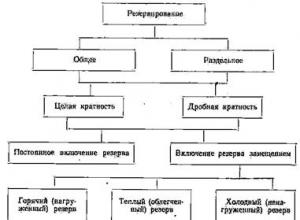Jansson adventures of the Moomin troll. All About the Moomins by Tove Jansson
Tove Jansson
Tales of Moominvalley
DET OSYNLIGA BARNET OCH ANDRA BERÄTTELSER
Copyright © Tove Jansson, 1962
Schildts Forlags AB, Finland. All rights reserved.
© S. Plakhtinsky, translation, 2016
© Edition in Russian, design.
LLC "Publishing Group "Azbuka-Atticus"", 2012
Publishing house AZBUKA®
* * *Spring song
Once on a quiet, cloudless evening at the end of April, Snusmumrik went very far to the north - there were still small islands of snow in the shadows here and there.
He walked all day, admiring the wildlife and listening to migratory birds calling overhead.
And they were heading home from the southern countries.
He walked cheerfully and cheerfully, since his backpack was almost empty and he had no worries or sorrows in his soul. Everything made him happy - the forest, the weather, and his own loneliness. Tomorrow seemed as far away as yesterday - the reddish, dim sun flashed between the branches of the birches, and the air was cool and gentle.
“A suitable evening for a song,” thought Snusmumrik. “For a new song, in which there would be languor, and spring sadness, and, most importantly, unbridled joy, the joy of wandering and loneliness.”
This melody had been sounding in him for many days, but he still did not dare to release it into the wild. She had to grow up properly and prettify herself, become so independent that all her sounds would joyfully jump into place as soon as he touched his lips to the accordion.
If he had called them too early, it might have happened that they would have positioned themselves haphazardly, and the song would have turned out so-so, not very successful, and then he might have lost all interest in it. A song is a serious matter, especially if it should be both funny and sad.
But that evening Snusmumrik was confident in his song. It’s already almost formed – it will become the best of his songs.
And when he approaches the valley of the trolls, he will play it, standing on the railing of the bridge over the river, and Moomintroll will immediately say that this is a wonderful song. Just a wonderful song.
Snusmumrik stepped on the moss and stopped. He felt a little uneasy; he remembered Moomintroll, who was waiting for him and missed him very much. Who admired him and said: “Well, of course, you are free, it’s clear that you will leave, don’t I understand that you need to be alone sometimes.”
And at the same time, there was melancholy and hopelessness in his eyes.
“Ay-ay-ay,” Snusmumrik said and moved on. - Ah ah ah. He is so sensitive, this Moomintroll. I don't need to think about him. He's very cute, but I won't think about him now. This evening I am alone with my song, and today is not tomorrow.
After a minute or two, Snufkin managed to get Moomintroll out of his head. While looking for a suitable place to stop, he heard the babbling of a stream, somewhere a little further away, deep in the forest, and immediately headed there.
The last red streak between the tree trunks had faded, and the spring twilight was slowly gathering. The entire forest was plunged into the evening blue, and the birches, like white pillars, retreated further and further into the twilight.
It was a beautiful stream.
Clean and transparent, he danced over the brown shreds of last year's leaves, ran through ice tunnels that had not yet melted and, turning onto a moss-covered lawn, threw himself headfirst onto the white sandy bottom, forming a small waterfall. This stream either hummed cheerfully in a thin mosquito voice, or gave its voice a stern and threatening expression, and sometimes, after rinsing its throat with snow water, it burst into laughter.
Snusmumrik stood and listened. “The stream will also fall into my song,” he thought. “Maybe as a chorus.”
At that moment, a stone fell from the dam, changing the melody of the stream by one octave.
“Not bad,” said Snusmumrik admiringly. “That’s exactly how it should sound.” One more note is just what you need. Or maybe dedicate a separate song to the stream...
He took out his old saucepan and filled it under the waterfall. I went under the fir trees in search of brushwood. Because of the melting snow and spring rains, the forest was wet and damp, and Snusmumrik had to climb into a thick windfall to find dry branches. He extended his paw - and at the same moment someone squealed and darted under the spruce and quietly squealed for a long time, retreating into the depths of the forest.
“Well, yes, of course,” Snusmumrik said to himself. - There are all sorts of small fry under every bush. I know them... And why are they always so restless? The less, the more restless.
He pulled out a dry stump and some dry branches and slowly built a camp fire in a bend in the creek. The fire started immediately, because Snusmumrik was used to cooking his own lunch. And he always cooked only for himself and no one else. He was not very interested in other people's dinners, because all his acquaintances did not want to give up the habit of chatting while eating.
They also had a weakness for chairs and tables, and some of them even used napkins.
He had even heard of one Hemulen who changed his clothes before eating, but that was probably just slander.
With an absent look, Snusmumrik slurped his thin soup, and all this time his gaze was fixed on the green mossy carpet that spread out under the birches.
The melody was now very close, all that was left was to grab it by the tail. But he could take his time; she was still surrounded and could no longer escape. Therefore, first he will start washing the dishes, then the pipe, and then, when the coals in the fire glow and the night animals begin to call to each other in the forest, then it will be time for a song.
He saw her while he was rinsing a pot in the stream. This little girl hid behind a rhizome and stared at him from under her tousled hair hanging over her forehead. The eyes looked scared, but with extraordinary curiosity, they followed Snusmumrik’s every movement.
Snusmumrik pretended not to notice anything. He raked the coals to the fire and cut off a few spruce branches to make it softer to sit on. Then he took out his pipe and slowly lit it. He blew thin streams of smoke into the night sky and waited for his spring song to come to him.
But the song was in no hurry. But the baby’s eyes looked at him without stopping, they admiringly followed all his actions, and this began to irritate him.
Snusmumrik brought his paws folded together to his mouth and shouted:
The baby ducked under its root and, unusually embarrassed, squeaked:
“I hope I didn’t scare you?” I know who you are. You are Snufkin.
She climbed into the stream and began to move to the other side. The stream turned out to be too deep for such a baby, and the water in it was too cold. Several times her legs lost support and she splashed into the water, but Snusmumrik was so angry that he didn’t even try to help.
Finally, some pitiful and thread-thin creature crawled onto the shore, which, chattering its teeth, said:
- Hello! How lucky that I met you.
“Hello,” Snusmumrik answered coldly.
-Can I warm myself by your fire? – continued the baby, shining with her entire wet face. “Just think, I will become one of those who at least once managed to sit by Snusmumrik’s campfire.” I will remember this all my life.
The baby moved closer, put her paw on the backpack and solemnly whispered:
– Is this where you keep your harmonica? Is she there inside?
“Yes, there,” said Snusmumrik rather unfriendly. His solitude was broken, his song would not return - all the mood was gone. He bit his pipe and looked at the birch tree trunks with empty, unseeing eyes.
“You won’t bother me at all,” the baby exclaimed with the most innocent look. - Well, if you suddenly wanted to play. You can’t even imagine how much I want to listen to music. I've never heard music before. But I've heard about you. And Hedgehog, and Knutt, and my mother - they all told... And Knutt even saw you! You don’t know... it’s boring here... And we sleep so much...
- But what is your name? – asked Snusmumrik. The evening was still ruined, and he decided that it was better to chat than just remain silent.
“I’m still too little, and I don’t have a name yet,” the little girl answered readily. “No one has asked me about this before.” And then suddenly you appear, about whom I have heard so much and wanted to see so much, and you ask me what my name is. Or maybe you could... I mean, it wouldn’t be difficult for you to come up with a name for me that would be only mine and no one else’s? Right now…
Snusmumrik muttered something and pulled his hat over his eyes. Some bird flew over the stream, flapping its long wings pointed at the ends, and its cry, melancholy and drawn-out, echoed through the forest for a long time: “Ti-u-u, ti-u-u.”
“You will never become truly free if you admire someone too much,” Snufkin suddenly said. - I already know.
 (estimates: 4
, average: 2,75
out of 5)
(estimates: 4
, average: 2,75
out of 5) Title: All about the Moomins
About the book “All About the Moomins” by Tove Jansson
The main character of the fairy tales is the boy Moomintroll, who lives with his family in a warm and cozy house. He has a fidgety sister, a mother who is the embodiment of an ideal, understanding parent who will not scold over trifles, and a father who is a romantic and tireless adventurer. However, these qualities were passed on to Moomintroll.
The main character, throughout all the stories and stories, will find himself in comic stories, find new friends and make friends with old ones - unusual and strange, and also travel around Moominvalley. The reader is waiting for truly exciting stories that will not leave you indifferent. Tove Jansson's fairy tales are so heartwarming and inventive that it is simply impossible to stop.
The events in the book “All about the Moomins” will be very different - the fall of a comet (apocalypse), dad’s wanderings across the sea (almost “Treasure Island”), meeting winter (horror). There will also be fantasy and a lot of humor. Of course, there will be negative heroes who, subsequently, will turn out to be not so scary, but simply lonely, abandoned by everyone and therefore angry.
Tove Jansson has collected human wisdom in a book, under the influence of which the heroes of the cycle grow and change. Moomintroll's reckless childhood actions in the first works turn into growing up and maturity of thoughts in the last stories. Reading the collection “All about the Moomins”, the child will grow up along with the characters of fairy tales.
The adventures of the main character are exciting and varied. The author skillfully keeps the intrigue until the end of the story. And if questions remain after the last page, they do not spoil the overall impression of the collection - delight and smiles. The book “All About the Moomins” should be read by everyone without exception, regardless of age, preferences and interests.
On our website about books, you can download the site for free without registration or read online the book “All About the Moomins” by Tove Jansson in epub, fb2, txt, rtf, pdf formats for iPad, iPhone, Android and Kindle. The book will give you a lot of pleasant moments and real pleasure from reading. You can buy the full version from our partner. Also, here you will find the latest news from the literary world, learn the biography of your favorite authors. For beginning writers, there is a separate section with useful tips and tricks, interesting articles, thanks to which you yourself can try your hand at literary crafts.
Quotes from the book “All About the Moomins” by Tove Jansson
It must be very lonely for someone who everyone is afraid of.
You need to figure everything out with your own mind<...>and experience everything alone too.
New gates to the Incredible and Possible have opened. A New Day has begun, when anything can happen if you don’t have anything against it.
There are so many unknowns here.<...>But on the other hand, why does everything have to be the way you’re used to?
What a pity that all the most interesting things end when you stop being afraid of him and when, on the contrary, you already start having fun.
This means everything will burn down soon! - My shouted joyfully. - All the houses, gardens, Moomin toys, their little brothers and sisters will burn!
Sometimes it takes a long time, an awfully long time, before everything falls into place.
The beginning of a journey is as important as the first lines of a book. They determine everything.
I believe that every canvas, still life, landscape, anything, is at its very core a self-portrait.
Everything is very uncertain and that’s what calms me down.
Tove Jansson was born on August 9, 1914 into a creative family (father is a sculptor, mother is a graphic artist). She spent almost her entire life in Helsinki. She studied at art schools in Stockholm and Paris. Traveled throughout Italy, France and Germany for creative purposes. Already in the 1920s, she published comics in Garm magazine, where her mother worked. The first exhibition of Tove Jansson's works took place in 1943 in Helsinki.
There are several legends about how the image of Moomintroll originated, but they all agree that its graphic incarnation appeared, at the earliest, in 1930. The first image of Moomintroll was published as a cartoon in the Finnish magazine Garm in 1940. The first book from a series of works about the Moomins was published in 1945 (“Little Trolls and the Great Flood,” written and illustrated in 1938), but her second story “Moomintroll and the Comet” (1946), which gave detailed information, gained popularity. description of Moomin Valley (Moomindalen), which became the setting for most subsequent stories. The next book, “The Wizard's Hat” (1949), gave impetus to the Moomin boom in many countries around the world.
Despite the fact that the trolls were borrowed by the writer from Swedish fairy tales, their image was significantly reworked, and in general we can say that folklore had minimal influence on Tove Jansson’s work. The life of the inhabitants of Moomin imitates the life of Jansson's own family from the point of view of a child - it is unknown where food and household items come from, the Moomin neighbors, although grumpy, are most often friendly. In later works, Jansson’s characters seem to grow up and understand that the world is actually different - cruel and indifferent (see, for example, the story with the red ants or the story about the sea horses in the story “The Father and the Sea”). If earlier Morra was just a fairy-tale monster, then later her image is concretized and even becomes an expression of the injustice of the world order: “It was so easy to imagine someone who would never warm up, whom no one loves and who destroys everything around him” (“The Pope and the Sea”) . However, the author does not seek to push the reader to the conclusion that life in this world is filled with fear and torment. The last of the books about the Moomins ends with them returning to their home.
At the heart of Tove Jansson's artistic world is the image of a home - a home in which the lights are always on, loved ones are waiting for you, delicious food and a warm bed are ready. This is an unshakable citadel of security and love, one thought about which allows you to overcome any adversity and where you can always return. So, Moominmama calmly waits for the end of Moomintroll’s protracted wanderings at a set table (“The Comet is Arriving”).
Another important motive in Tove Jansson's work is freedom. Everyone has the right to creative self-expression, since nature itself and the entire surrounding world are free in their manifestations. The character can only limit his freedom of action in accordance with his own ideas about duty, but does not have the right to impose these ideas on others: Snusmumrik hates the Keeper of the park, where it is forbidden to run, laugh, smoke, but at the same time he voluntarily abandons his plans when forced take care of several tiny orphaned cubs (“Dangerous Summer”).
From 1953 to 1959, Tove Jansson drew a Moomin comic for The London Evening News, which was then drawn (until 1970) by her brother, Lars Jansson.
Tove Jansson also illustrated books by Tolkien and Lewis Carroll. She has published a number of novels and short stories that are not related to the Moomins.
Jansson's children's books have been translated into more than 30 languages, including Russian. Her works for adults are less well known. Tove Jansson has received numerous awards and prizes: the Selma Lagerlöf Medal (also known as the Nils Holgersson Medal, 1953), the Finnish State Prize for Literature (three times - 1963, 1971, 1982), the Hans Christian Andersen International Gold Medal (1966), the Suomi Prize (1993). Among others - the award of the Swedish Academy of Sciences, the Rudolf Koivu Prize (for illustrations), the Order of the Smile (Poland). Her name is included in the Andersen Honor Roll four times.
Latest site materials
Video

How to enable and disable Push Notifications?
Apple is responsible for the correct operation of Push notifications in iOS. Any third-party application that wants to send notifications to the user must use Apple servers for this. The scheme looks like this: the developer will raise his own ser
Video

Download themes for Android phone The best themes for your phone
I wanted to post wallpapers for a mobile phone - I don’t think it’s worth talking about the fact that they will look great only at the resolution indicated in the title, in other cases they will be stretched out or, conversely, not on the entire screen. Pictures
Social media

Yandex browser constantly starts: how to cancel the launch, make the browser launch without an additional window
Yandex is a popular browser that pleases its fans with a high level of functionality. A careful study of the program allows us to note the stability and reliability of its operation, user-friendly interface, and prompt loading of any pages. Despite this, in
Video

Reservation: general and separate
Classification of redundancy methods INCREASING RELIABILITY RESERVATION AS A METHOD Redundancy is one of the main means of ensuring a given level of reliability (especially failure-free operation) of an object when elements are not reliable enough.
Computer

What is VKontakte signa, let's look at this question today. Until the moment of writing this article, I heard the word signa somewhere, but I didn’t even think about what a signa is and why they are made on VKontakte. The social network VKontakte has a lot of oddities and signals like p
The Galaxy Note family has a special place among other Samsung smartphones. After all, it was the models of this line that have always set the tradition of quality and technical capabilities. In each new smartphone in the series, the South Korean brand introduced new technologies,
